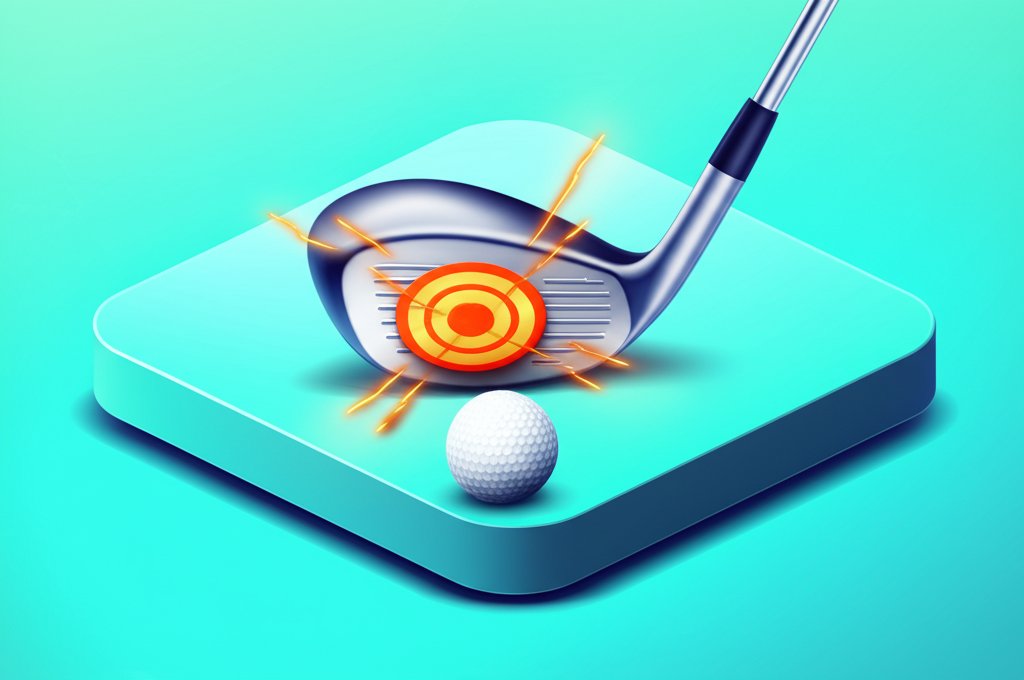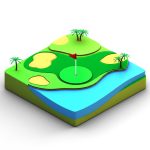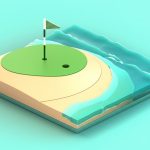Are you consistently striving for more distance and a clearer understanding of your golf club’s capabilities? Every golfer, from beginner to seasoned veteran, shares the desire to optimize their game through precise distance control. This comprehensive guide, crafted with insights from leading golf principles, will equip you to play smarter, lower your scores, and truly master your golf club distances. For example, see golf club distance guide. We’ll delve into the critical factors influencing your shots, compare your performance to professional and amateur benchmarks, teach you how to accurately measure your own distances, and provide actionable strategies to enhance both your power and precision.
Unlock Your Potential: The Power of Mastering Golf Club Distances


Like countless dedicated golfers, you’re likely on a continuous quest to hit the ball farther and with greater consistency across your entire bag. A common question arises: “How do my golf club distances stack up against others?” Understanding your club distances is not just about power; it’s about making smarter choices on the course, avoiding hazards, confidently selecting the right club for every shot, and identifying areas where you need to improve. This knowledge leads to more effective practice, lower scores, and ultimately, more enjoyment from your game.
The Science Behind the Yards: Critical Factors Affecting Distance
A multitude of interconnected elements dictates how far your golf ball travels. Mastering these variables is crucial for consistent performance.
Key Terminology Defined:
- Swing Speed: The velocity of the clubhead at the moment of impact. A faster swing generally translates to greater ball speed.
- Ball Speed: The speed of the golf ball immediately after impact. This is a primary determinant of distance.
- Smash Factor: A vital indicator of impact efficiency, calculated as
Ball Speed / Clubhead Speed. A higher smash factor signifies optimal energy transfer from the club to the ball, resulting in maximum distance. For a driver, a smash factor close to 1.5 is considered ideal.- Example 1: A golfer swings their driver at 100 mph and achieves a ball speed of 140 mph. Their smash factor is 1.4 (140 mph / 100 mph = 1.4). This indicates good energy transfer and a solid drive.
- Example 2: Another golfer also swings their driver at 100 mph, but their ball speed is 130 mph. Their smash factor is 1.3 (130 mph / 100 mph = 1.3). This suggests less efficient energy transfer, potentially due to an off-center hit, resulting in a shorter drive despite the same swing speed.
- Launch Angle: The angle at which the ball leaves the ground after impact. An optimal launch angle is crucial for maximizing carry distance for each club.
- Carry Distance: The total distance the ball travels in the air before landing. This is critical for clearing hazards and hitting greens.
- Roll Distance: The distance the ball rolls after landing. This is influenced by course conditions and ball spin.
- Layup: A strategic shot aimed at a safe location, often short of the green, to avoid hazards or set up the next shot.
Club Design and Impact Mechanics:
- Club Loft: The angle of the clubface significantly influences trajectory and distance. Drivers, designed for maximum distance, typically have 8-13 degrees of loft. In contrast, a pitching wedge, designed for height and control, might have 41-46 degrees. Lower-lofted clubs generally produce more distance.
- Shaft Length: Longer shafts generate more clubhead speed, directly contributing to greater distance. This is why drivers have the longest shafts in the bag.
- Club Face Angle and Path: The relationship between your club face aim and club path at impact directly impacts ball flight and spin. An open club face relative to the path often causes slices (left-to-right spin for a right-handed golfer), while a closed face can cause hooks (right-to-left spin). Both conditions can lead to excessive, undesirable spin and a significant loss of distance as the ball deviates from a straight line.
Environmental and Player Factors:
- Altitude: At higher altitudes, where the air density is lower, there’s less aerodynamic drag on the ball. This often results in increased carry distance. For instance, a ball driven 240 yards at sea level could carry around 255 yards in Denver’s mile-high altitude.
- Temperature: Every 10-degree Fahrenheit increase in temperature can lead to a couple of extra yards of ball flight with a driver due to changes in air density and ball compression. Colder temperatures tend to reduce distance.
- Wind: A strong headwind will significantly shorten your shots, demanding an extra club or more, while a tailwind can provide a substantial boost.
- Course Conditions: A dry, firm golf course will typically allow for more roll after landing, increasing total distance, whereas a soft, soggy course will minimize roll.
- Golf Ball Quality: Many practice range balls are cheap, inconsistent, or even specifically designed not to fly as far as premium golf balls. A typical range ball can easily cost you 10+ yards with a driver, while a limited-flight range ball might reduce driver distance by 30+ yards compared to a game-quality ball. Using the same type of ball you play on the course for distance measurements is crucial for accuracy.
- Age and Skill: As golfers age or become less fit, their swing speeds might decrease, leading to shorter distances. Conversely, experienced golfers often develop more efficient swing mechanics and greater clubhead speed, allowing them to hit the ball farther than beginners.
Benchmarking Your Game: PGA, LPGA & Amateur Distance Averages
Understanding benchmark distances provides valuable context for your own game, though individual results will always vary. These averages serve as useful reference points to help identify areas for potential growth.
Driver & Iron Carry Distances for Comparison:
| Golfer Type | Driver Swing Speed (MPH) | Driver Carry (Yards) | Typical 7-Iron Carry (Yards) |
|---|---|---|---|
| PGA Tour Player | 115 | 282 | 185-200 |
| LPGA Tour Player | 96 | 223 | 140-155 |
| Amateur Male Golfer | 90-95 (approx.) | 217 | 130-160 |
| Average 15 Handicap Male* | – | 200-220 | 130-145 |
*Based on data from Shot Scope, the average male golfer often has a handicap index of just over 14, making the 15-handicap male a good reference point.
General Pro Club Distance Reference (Total Yards):
This table offers a broad range of how far professional golfers might hit each club, serving as an aspirational benchmark:
| Club | Pro Distance (Yards) |
|---|---|
| Driver | 250-300 |
| 3 Wood | 230-280 |
| 5 Wood | 210-260 |
| 3 Iron | 200-240 |
| 4 Iron | 190-230 |
| 5 Iron | 180-220 |
| 6 Iron | 170-210 |
| 7 Iron | 160-200 |
| 8 Iron | 150-190 |
| 9 Iron | 140-180 |
| Pitching Wedge | 120-160 |
| Sand Wedge | 80-110 |
| Lob Wedge | 50-80 |
For most irons, a consistent yardage gap of about 8 to 10 yards between clubs is ideal. For example, if your 7-iron carries 150 yards, your 8-iron should carry around 140 yards.
Precision Measurement: How to Find Your Own Club Distances
To truly master your golf club distances, you need accurate data specific to your swing and your clubs. Creating your own club distance card is an invaluable step.
Methods for Measuring Your Distances:
- Launch Monitor: Devices like a Trackman, Foresight GCQuad, or even more accessible personal launch monitors (e.g., PRGR) provide highly accurate data on ball speed, launch angle, spin, carry, and total distance. Many driving ranges now offer bays equipped with launch monitors for rent.
- Golf Simulator: Renting time on a high-quality golf simulator provides a controlled environment to gather precise data for all your clubs.
- Golf Tracker: Systems such as Arccos Caddie use sensors on your clubs to automatically track your shot data during actual rounds, providing real-world averages.
- Range Finder at the Driving Range: While less precise, you can use a laser rangefinder on a driving range, aiming at specific targets. Hit at least ten golf balls with each club, note the distances, and discard extreme outliers. Repeat this charting monthly, or more frequently if you are actively working on your swing. Remember to use the same type of golf balls you play on the course for the most accurate results.
What Data to Track:
- Carry Distances: Essential for hitting greens, clearing hazards, and precise approach shots.
- Total Distances: Helpful for understanding the overall range of each club on the course, especially on drives and longer shots where roll is a factor.
- Partial Swings: For wedges and short irons, understanding distances for 1/4, 1/2, or 3/4 swings provides critical control around the green.
How to Use Your Distance Data:
Once you’ve gathered your numbers, organize them into a club distance card.
- Paper: The most basic method is to write them down on a small note card.
- Phone: Save these numbers as a note or document for easy reference during your round. Many golf GPS apps also allow you to input and track your club distances.
- Print Out: Create a custom yardage card and print it. You can laminate it, put it in a scorecard holder, attach it to your golf bag, or tape it to your push cart.
Upgrade Your Game: Strategies to Improve Distance & Control
Beyond simply knowing your numbers, actively working to improve your distances and consistency will transform your game.
Unleash the Power: Proven Swing Speed Training for Greater Distance
The faster your swing speed, the greater the distance you’ll achieve. The good news is that you can actively train your swing speed like any other facet of the game, seeing relatively quick and significant results that will impact every full-swing club in your bag.
The 6-Week Swing Speed Transformation Program:
- Weeks 1-2: Overspeed Priming: Initiate overspeed training using lighter clubs or specialized training aids (e.g., speed sticks, weighted drivers). This process effectively reprograms your neural pathways, conditioning your body to execute movements at speeds it’s not accustomed to. Focus on swinging as fast as you possibly can, without a ball, 3-4 times per week.
- Weeks 3-4: Strength Foundation: Integrate golf-specific resistance training into your routine twice weekly. Focus on building core stability, explosive rotational power, and lower body strength. Exercises like medicine ball twists, squats, deadlifts, and rotational lunges are highly effective.
- Weeks 5-6: Integration & Refinement: Combine all elements of your training. Consciously practice transferring your newfound speed into actual golf drives on the range. Continue overspeed training 2-3 times a week and strength training once a week. Accurately measure your speed gains using a launch monitor to track your progress and celebrate milestones.
Realistic Expectations and Sustained Gains:
Most golfers can realistically anticipate gaining 5-15 mph in clubhead speed within 6-12 weeks of focused training. For instance, golfers diligently following a structured Level 1 speed program often observe a 5% increase in clubhead speed within just six weeks.
Achieving increased distance is not a one-time achievement; it demands ongoing commitment. To maintain and continue building
*
- Unforgettable: Talking Stick Golf Club Review – Desert Golfing Redefined - November 17, 2025
- Discover Talega Golf Club: Championship Golf & Spanish Hospitality Awaits! - November 15, 2025
- Is Strawberry Farms Golf Club Orange County’s Best Kept Secret? - November 13, 2025









